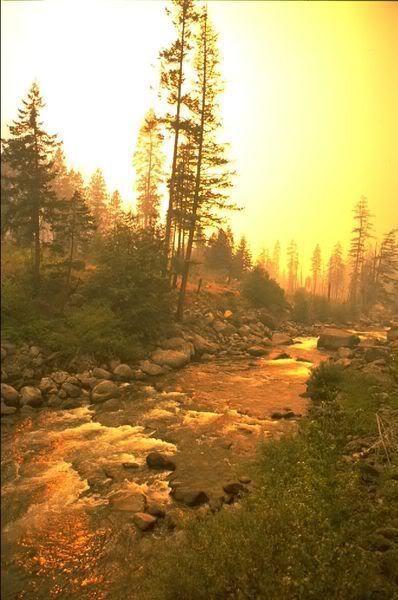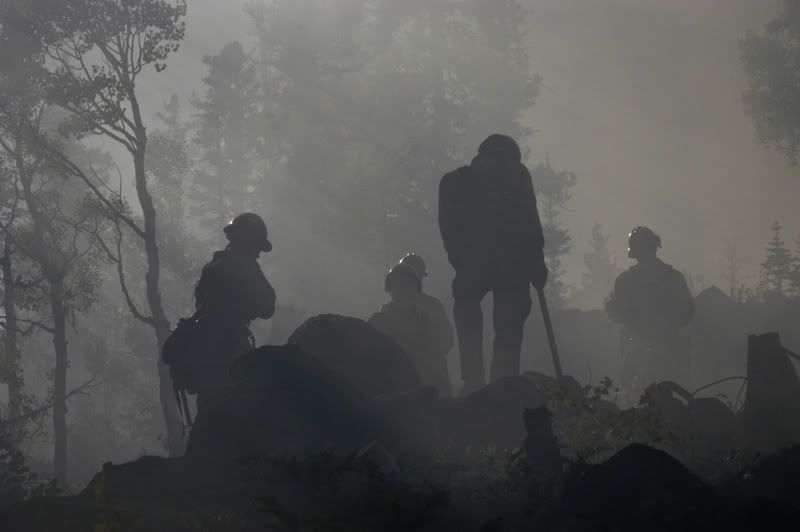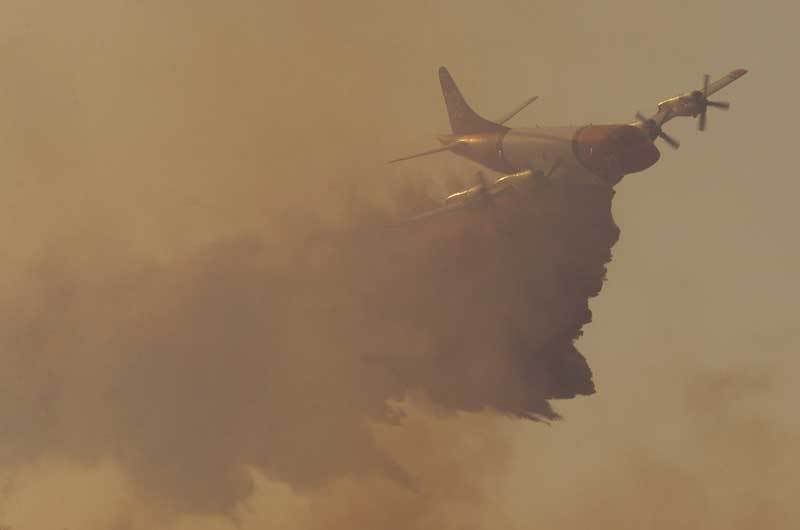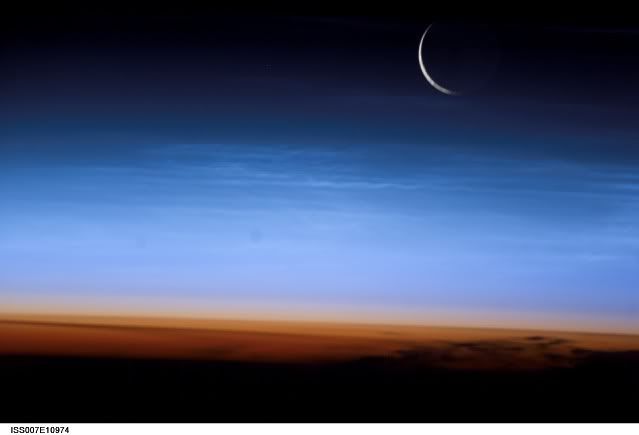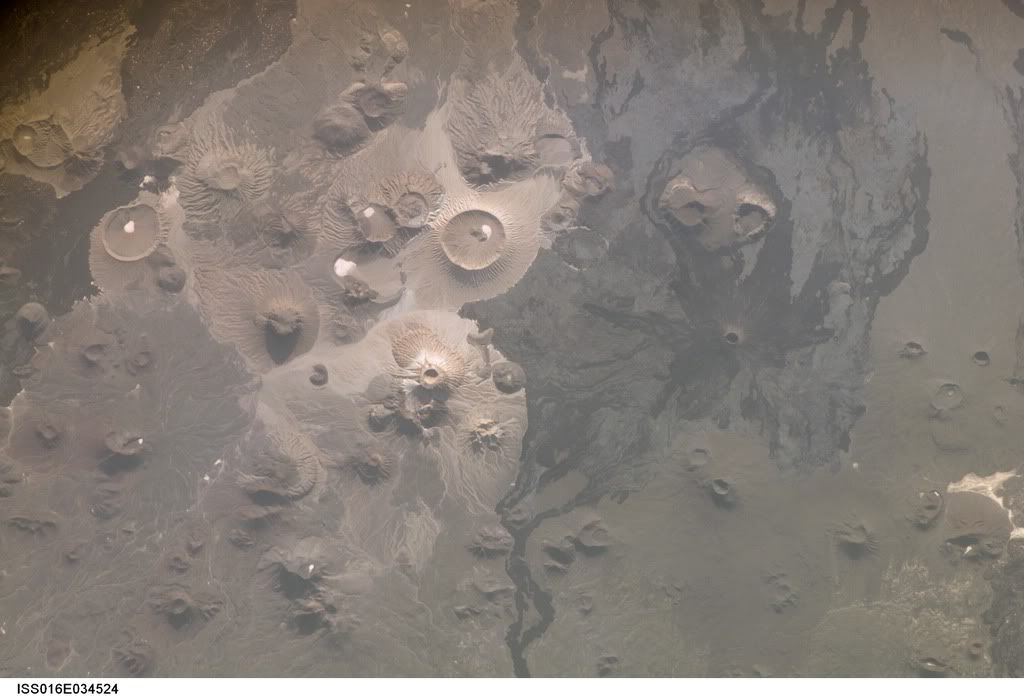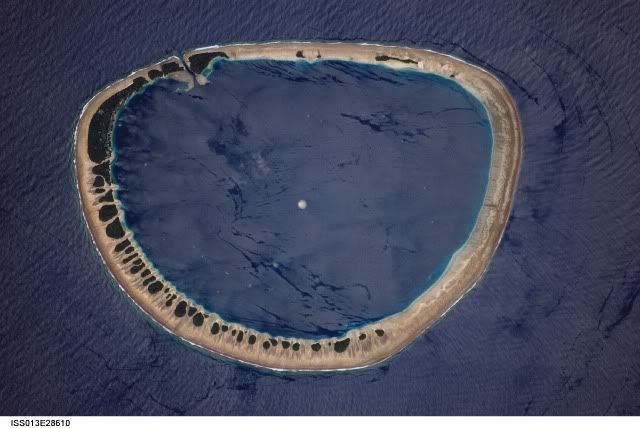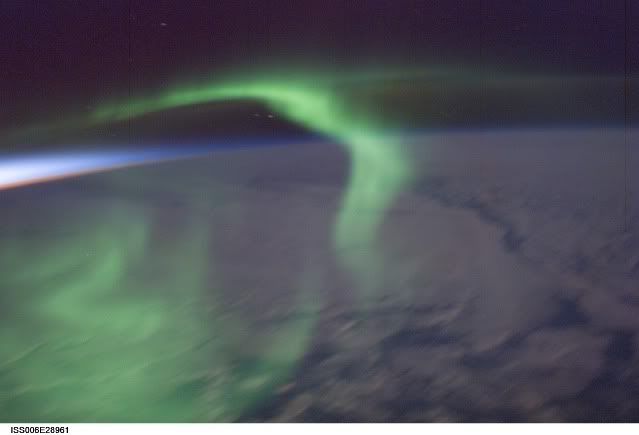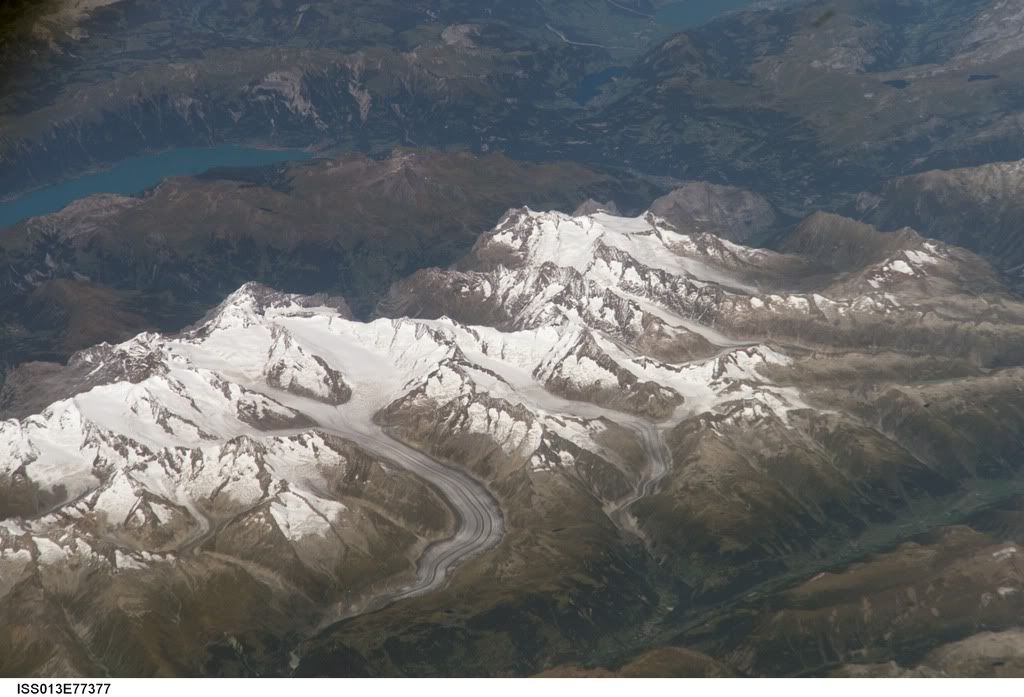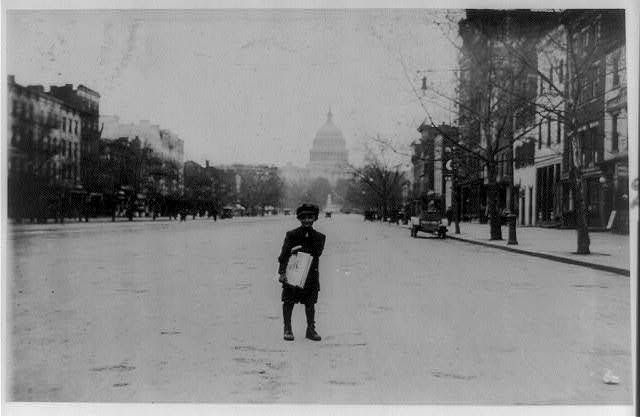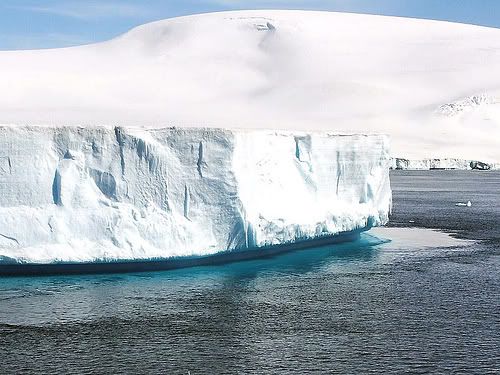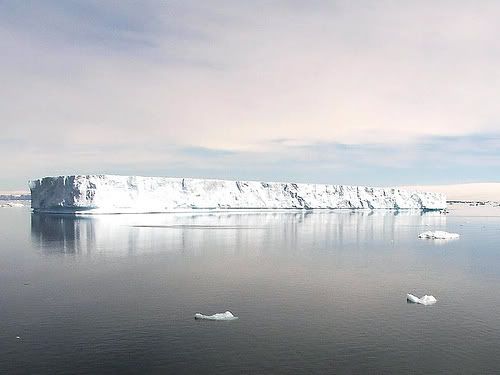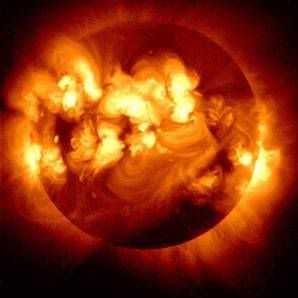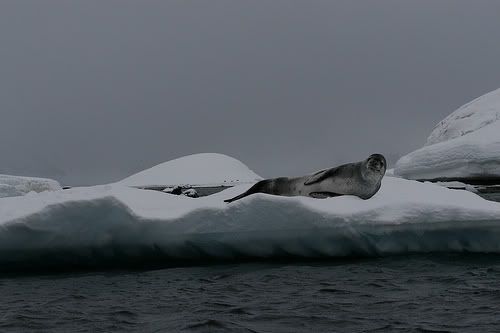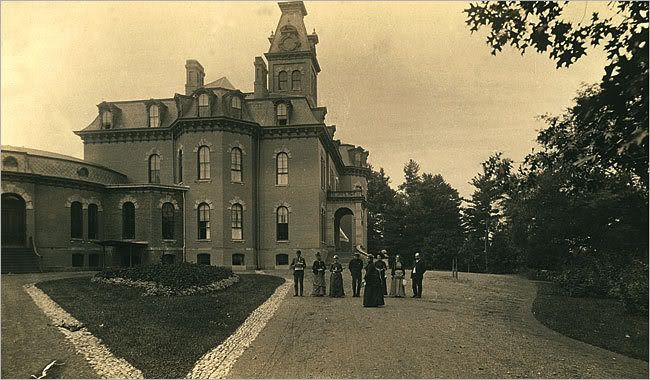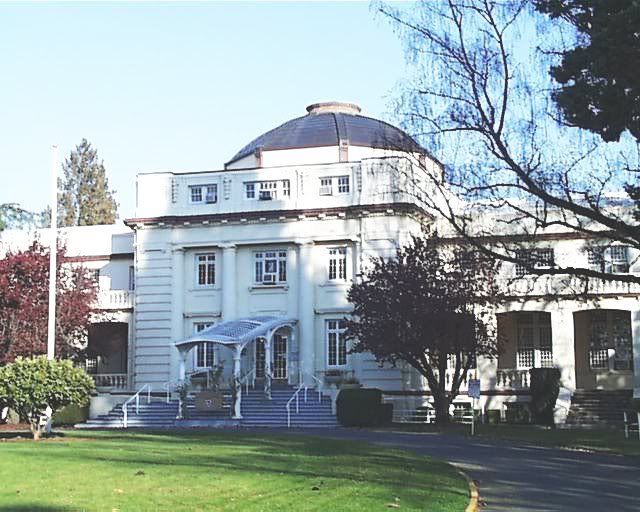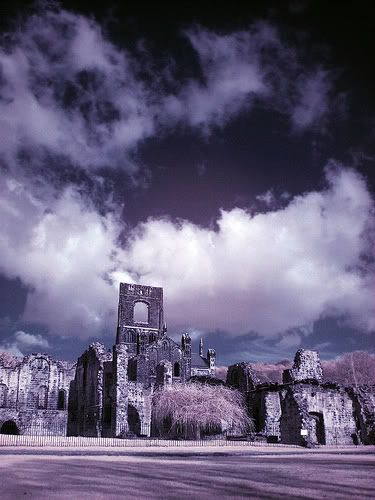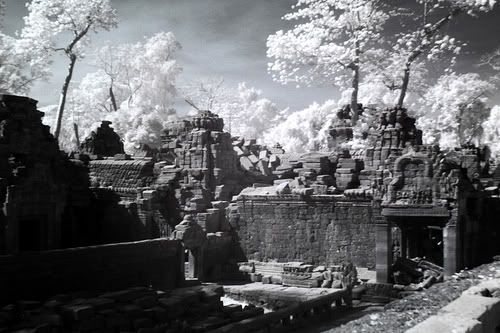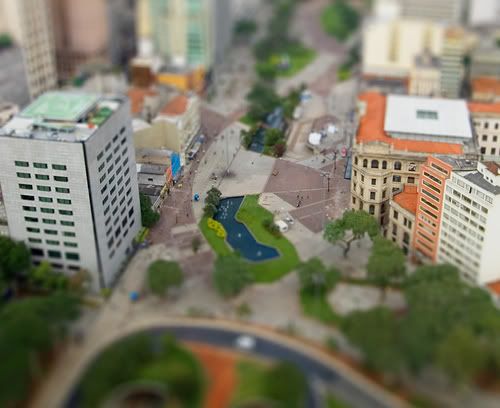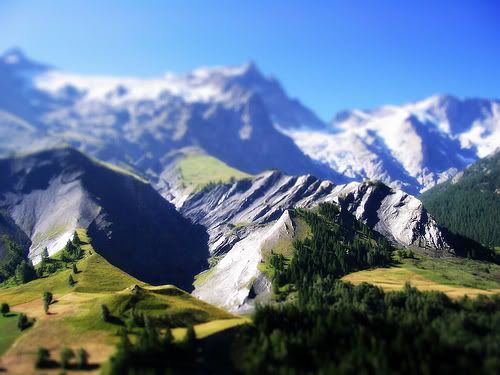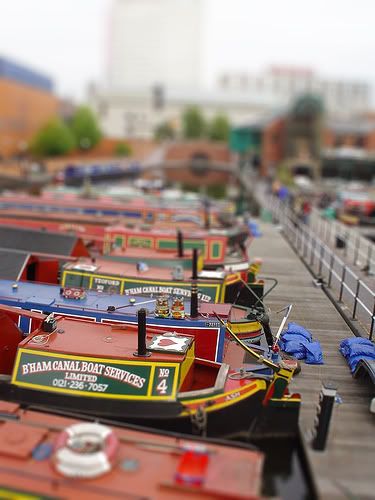The Japanese Art of Furoshiki
Forest Fires.
Types Of Forestfire.
1) Crawling fire: The fire spreads via low level vegetation in the forest. It occurs by the slow combustion of surface fuels. Surface fuels are fuel sources that are on the ground, these can be small bushes, logs, tree stumps and fallen leaves and branches. Crawling or surface fires tend to burn without generating a lot of flame. They can spread slowly and steadily and last for days after the main burning event has occurred.
2) Crown fire: A fire that "crowns" that is, it spreads to the top branches of the trees. It can spread at a remarkable rate through the canopy of a forest. Crown fires burn from aerial fuels, these are fuel sources that are at least 1 meter above the ground. Surface fuels can include branches, leaves, tall bushes and bark still on the tree. Crown fires are the most dangerous type of fire as they can spread faster than they can be outrun, particularly on windy days.
3) Jumping or Spotting fire: In a jumping fire burning branches or leaves are carried by the wind and start distant fires, the fire can jump natural fire breaks like roads and rivers.
Reporters Drive Through Butte County Forest Fire With Fire Crew.
firefighters at the unita national forest fire
Fire Suppression
Fire authorities in areas prone to wild fires often possess helicopters and fixed wing aircraft specially equipped for use in dousing areas that are inaccessible to ground crews, they can deliver large quantities of water or flame retardant chemicals directly onto the fire site.
In the case of fires that are too large to tackle directly, firefighters control the fire by controlling the area to which it can spread. They do this by creating control lines or extended fire breaks. These control lines can be produced by physically removing any fuel source from in front of the fire, or by backfiring. Backfiring involves starting a small, low-intensity fire, to burn off all the flammable material, in the path of the fire. These are then extinguished by firefighters or, directed in such a way that they meet the main fire front, at which point both fires run out of flammable material and are extinguished.
An indication of the skill and dedication employed by professional fire fighting teams can be seen in the fact that in 2004 US firefighters contained more than 99% of all new wildfires during initial suppressive actions.
Tornado in a Forest fire in Vatreni Croatia.
The powerful updrafts caused by a large wildfire will draw in air from surrounding areas. These self-generated winds can lead to a phenomenon known as a firestorm.
A 360 degree panorama from a lookout tower at Tripod Peak in the Boise National Forest.
Top Ten Images Taken from The International Space Centre.
The Aurora Borealis and lights over Finland, Russia, Estonia and Latvia. The cluster of stars to the lower right of the thin crescent Moon is the Praesepe or Beehive Cluster in Cancer. Just to the right of that is the planet Saturn.
The Earths Atmosphere.
The limb of the Earth at the bottom transitioning into the orange troposphere. The troposphere ends abruptly at the tropopause, which appears in the image as the sharp boundary between the orange and blue atmosphere. The silvery-blue noctilucent clouds extend far above the Earth's troposphere.
Night View Of Los Angeles, California
Hollywood is nestled against the south side of the Santa Monica Mountains. On the coast, Los Angeles International Airport (LAX) and the port facilities at Long Beach Naval Shipyards can be seen as bright spots.
Eruption of The Cleveland Volcano, Aleutian Islands, Alaska
 Photo credit: Jeffrey N. Williams & NASA
Photo credit: Jeffrey N. Williams & NASA
This image, acquired shortly after the beginning of the eruption, captures the ash plume moving west-southwest from the summit vent. The eruption was short-lived; the plume had completely detached from the volcano summit two hours later.
Harrat Khaybar, Saudi Arabia
Extensive lava fields known as haraat cover large areas in Saudi Arabia. One such field is the 14,000-square kilometer Harrat Khaybar, located approximately 137 kilometers to the northeast of the city of Al Madinah.
Nukuoro Atoll, Federated States of Micronesia.
Nukuoro Atoll is part of the Caroline Island chain, which stretches northeast of Papua New Guinea in the western Pacific. Nukuoro is one of 607 islands that make up the Federated States of Micronesia.
Green Aurora.
The reds and blues of a sunset light up the air layer to the west, while a green aurora dances along the earths magnetic field.
Bernese Alps, Switzerland.
The Aletsch Glacier dominates the centre of the picture, clearly marked by dark medial moraines extending along the glacier's length parallel to the valley axis.
Mount Everest and Makalu
Photo credit: NASA
The summits of Makalu on the left (8,462 meters: 27,765 feet) and Everest on the right (8,850 meters; 29,035 feet) are at the heights typically flown by commercial aircraft. They can only be seen at this height and angle from the International Space Station.
Randy Pausch Inspires Graduates
The First Ever View Of An Earth Rise
 first ever earth rise, taken on day 4, courtesy of NASA.
first ever earth rise, taken on day 4, courtesy of NASA.more information
Transcribed copies of the conversations on the Apollo Journal are © 2002 - 2006. W. David Woods and Frank O'Brien.
Lewis W Hine.
In 1907, he became a photographer for the National Child Labor Committee. The NCLC gave Hine his first assigned project, to photograph a New York tenement. Later that year while still at Columbia University graduate school Hine was assigned The Pittsburgh Survey, An ambitious project which aimed to give a detailed view of an industrial city. The survey would describe the gap between the largely unskilled immigrant workers and the affluent managers and executives. The aim of the survey was to highlight and hopefully create an understanding of the social and economic inequalities that were present.
Between 1906 and 1908, Hine worked as a freelance photographer for The Survey, a leading social reform magazine.
In 1908, the NCLC assigned Hine to photograph child labor practices. Hine continued this work until 1917. During this period he travelled widely across America photographing children at work in textile mills, factories, canneries, mines and farming.
 Bowling Alleys, connected with Geo. P. Grays, "Bastable Caf " on Genesee St. About 8 very small boys employed here. Work until midnight. Photo taken at 11:30 P.M. Location: Syracuse, New York (State)
Bowling Alleys, connected with Geo. P. Grays, "Bastable Caf " on Genesee St. About 8 very small boys employed here. Work until midnight. Photo taken at 11:30 P.M. Location: Syracuse, New York (State)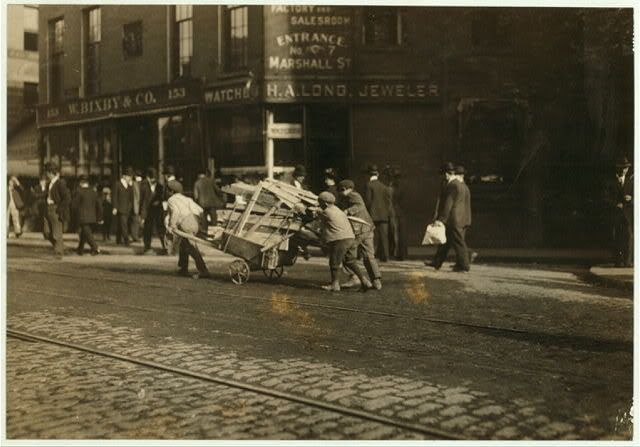 1909 Boy Woodpickers Under Way. Location: Boston, Massachusetts
1909 Boy Woodpickers Under Way. Location: Boston, Massachusetts
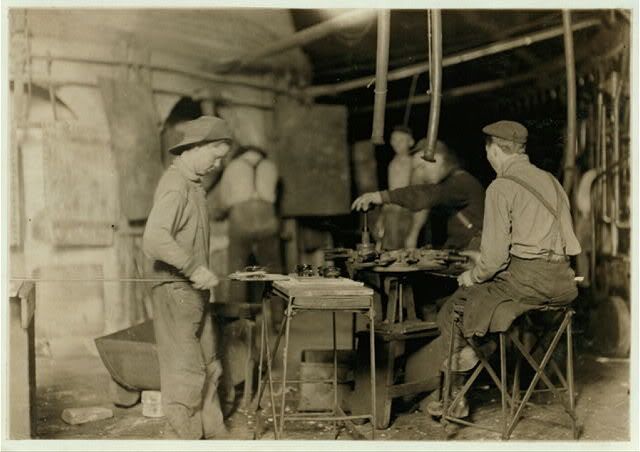 1908 October Bill, a carrying-in boy, Canton Glass Works, Marion, Indiana. Gets $.80 a day or night.
1908 October Bill, a carrying-in boy, Canton Glass Works, Marion, Indiana. Gets $.80 a day or night.In 1917 Hine accepted a position with the American Red Cross were he documented their relief work with refugees and displaced peoples in post war Europe.
In 1920 he returned to New York and was assigned to the American Red Cross National Headquarters. Here he photographed the drought relief work in the American South, for the Tennessee Valley Authority and made photographic studies of life in the mountains of eastern Tennessee.
He also served as chief photographer for the works progress Administration's National Research Project, which was set up to study changes in industry and how this effected employment.
In 1930 Hine was hired to photograph the construction of the Empire State Building. Hine photographed the workers in many precarious positions while they secured the framework of the structure. In order to obtain the best vantage points, Hine was swung out from the building in a specially designed basket.
The series of photographs he produced lead to the 1932 book Men at Work. Critics noted that he had managed to show the human contribution to modern industry while depicting the dignity and power of the American worker. At this time he even exhibited at the 1933 Worlds Fair.
By 1936, Hine was appointed head photographer for the National Research Project of the Works Progress Administration until his death in 1940 after complications from surgery.
The Library of Congress holds more than 5,000 Hine photographs 5,100 photographic prints and 355 glass negatives, given to the Library of Congress, along with the NCLC records, in 1954. NCLC records in the Library of Congress Manuscript Division contain approximately 65 reports, about 30 of which were authored by Hine.
Olympics 2008 Monkey Movie
BBC Magazine has an article 1970s cult TV series: Monkey Magic.
The BBC site has more pictures and graphics: Meet Monkey and friends.
Even more information from the BBC site: Monkey's journey begins.
Labs At Night
The Moon transits the Earth as seen by EPOXI
Credit: Donald J. Lindler, Sigma Space Corporation/GSFC; EPOCh/DIXI Science Teams.
NASA's Deep Impact spacecraft has created a video of the moon transiting the Earth as seen from the spacecraft's point of view 31 million miles away.
Deep Impact was the mission that, on July 4 2005, directed an impactor into comet Tempel 1 so that the internal composition of a comet could be analysed. NASA has now redirected the spacecraft for a flyby of comet Hartley 2 on Nov. 4, 2010.
EPOXI is a combination of the names for the two mission components that NASA has planned for the deep impact craft. The first is a search for extrasolar planets, which will be conducted during the journey to comet Hartley 2, is called Extrasolar Planet Observations and Characterization or EPOCH. The flyby of comet Hartley 2, the second mission, is called the Deep Impact extended Investigation or DIXI.
More Information
More information on Deep Impact: Deep Impact
Video of deep Impact launch: video of launch.
Video from the impacter hitting Temple 1: Impacter Video
The Weather Of The Antarctic.
Category 3: Good visibility, clear skies and no wind.
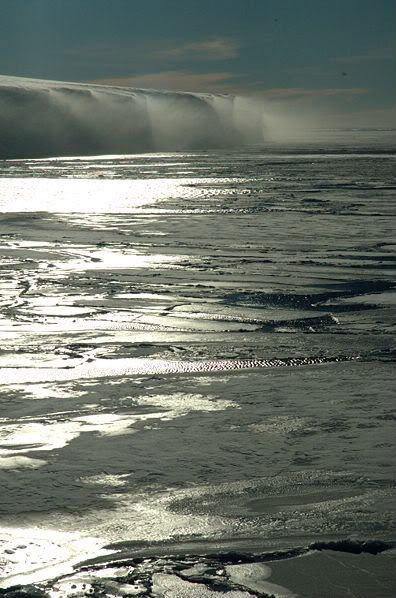
A katabatic wind originates from the cooling of air on a plateau, mountain or glacier. The density of air increases the colder it gets and so air will flow downwards, warming as it descends, thus creating the wind. The temperature of the wind depends on the temperature in the surrounding area and the distance descended.
Katabatic winds are most commonly found blowing out from the large and elevated ice sheets of Antarctica.The concentration of cold air over the ice sheets and their elevation creates a large amount of gravitational energy. This can propel the winds to hurricane force.
Solar Flares
A solar flare is a an explosion on the surface of the Sun, it occurs when magnetic energy that has built up in the suns atmosphere is suddenly released. Particles are heated and accelerated in the solar atmosphere and radiation is emitted across the entire electromagnetic spectrum from radio waves to gamma rays. The energy released in a flare is ten million times greater than the energy released from a volcanic explosion.
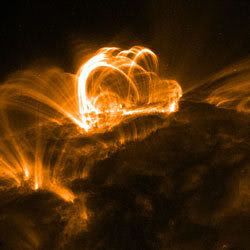 Solar flare up close
Solar flare up close
Inside a flare, the temperature can be as high as 100 million degrees Kelvin. Solar flares tend to eject solar matter, mostly protons and electrons, into space. These events are called coronal mass ejections.
Solar flares coincides with the Sun's eleven year cycle. When the solar cycle is at a minimum, active regions are small and rare and few solar flares are detected. These increase in number as the Sun approaches the maximum part of its 11 year cycle.
A Solar Flare Up Close.
Antarctic Images.
"Lost Cases, Recovered Lives": Suitcases from a State Hospital Attic
The Willard Psychiatric Center
When the Willard Psychiatric Center closed in 1995, staff members were clearing out the hospital when they found, in the rafters of an attic, rows of wooden racks, packed with almost 400 suitcases of all shapes and types, mens on the left, womens on the right. Placed in storage for collection by patients who never left the hospital.
Richard Dawkins' jaw-dropping talk on our bizarre universe
The Periodic Table of Videos
Cuckoo's Nest to be Torn Down
Really Achieving Your Childhood Dreams.
Infra-red Photography
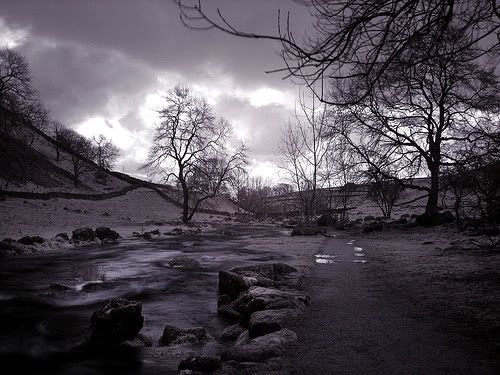 The river Aire towards Malham from the foot of Malham Cove, in the Yorkshire Dales.
The river Aire towards Malham from the foot of Malham Cove, in the Yorkshire Dales. A church taken in infra red.
A church taken in infra red.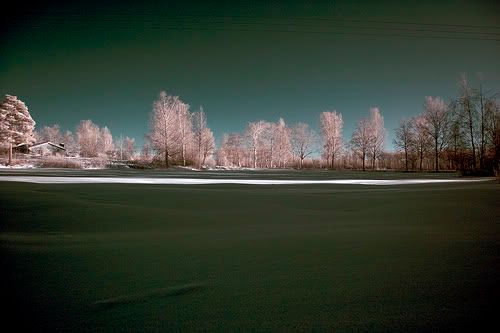 This snowy scene shows the wood effect.
This snowy scene shows the wood effect.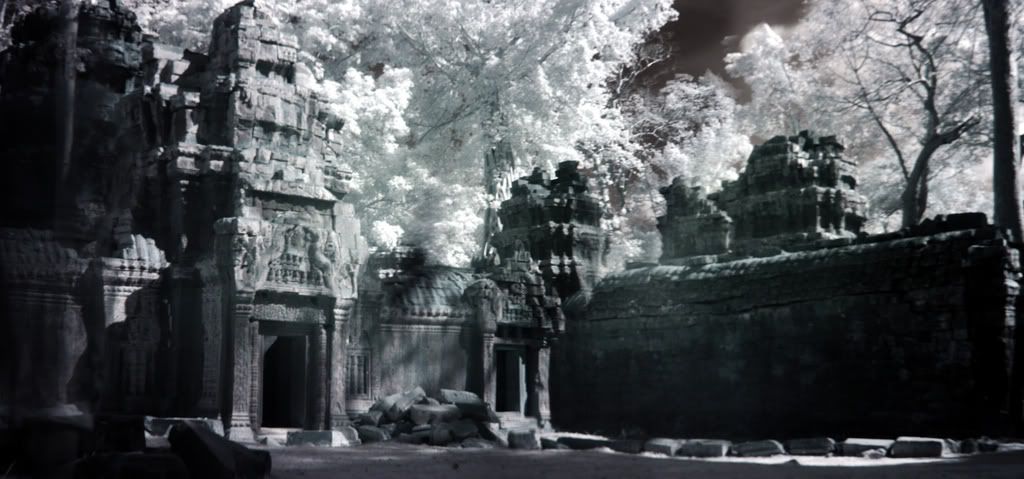 Anka Watt
Anka Watt 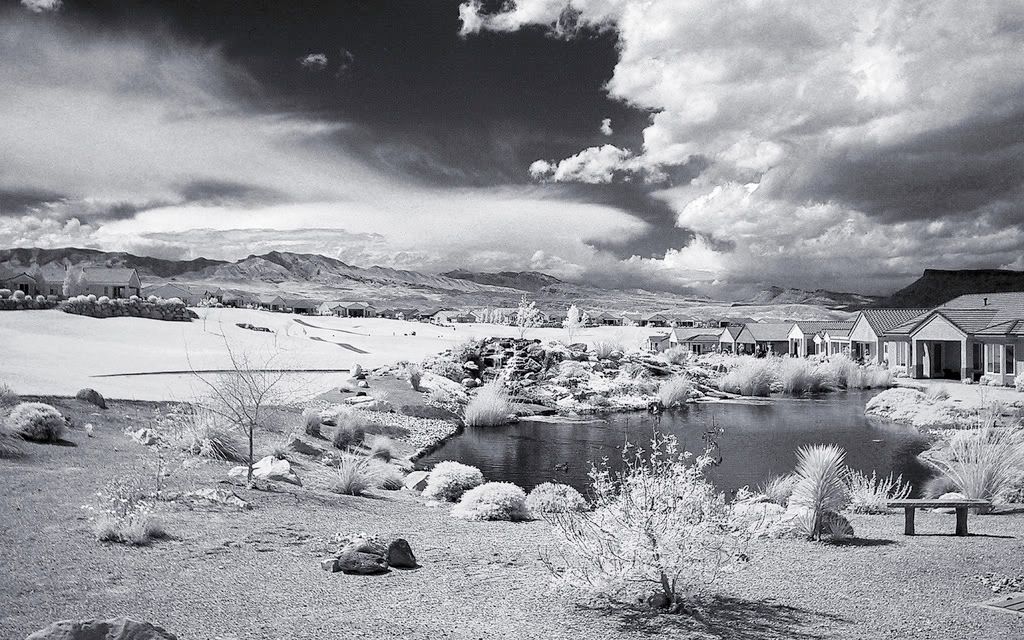 This photograph of SunRiver, St George, Utah shows the contrasting shades that can be achieved.
This photograph of SunRiver, St George, Utah shows the contrasting shades that can be achieved.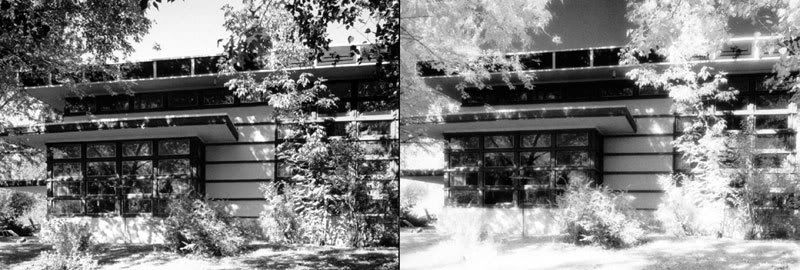 A side by side comparison shot taken of the Frank Lloyd wright's Rudin house shows the more extreme contrasts that can be achieved with infra red photography. Compared the sharper image of the black and white photograph on the left with the infra red picture on the right.
A side by side comparison shot taken of the Frank Lloyd wright's Rudin house shows the more extreme contrasts that can be achieved with infra red photography. Compared the sharper image of the black and white photograph on the left with the infra red picture on the right.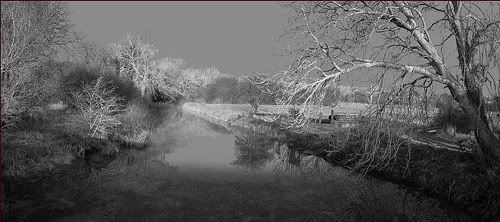 Infra red on black and white film makes for good landscape pictures, as this picture of Bere Mill shows.
Infra red on black and white film makes for good landscape pictures, as this picture of Bere Mill shows. Tilt-shift miniature faking
 Fake Tilt Factory ©giumaiolini's
Fake Tilt Factory ©giumaiolini'sTilt-shift miniature faking is a process in which a photograph of a real life location or object is manipulated so as to look like a photograph of a miniature or scale model. To achieve this effect the photographer photoshops the focus of the photograph, to simulate a shallow depth of field, which is more normally associated with a photograph of a miniature model. The area surrounding the central field of focus is blurred, and the colours of the original photograph are heightened.
more info on tilt shift facking from wikipidia
Tilt-shift photography
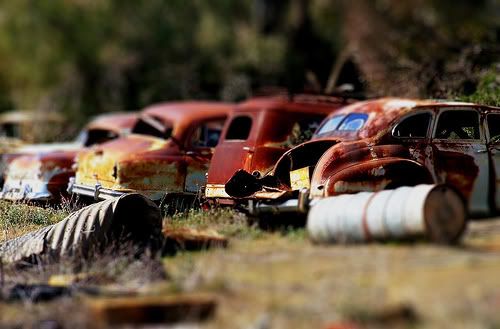 photograph©judepics
photograph©judepicsTilt shift encompasses two different types of movements: rotation of the lens, called tilt, and movement of the lens parallel to the image plane, called shift. Tilt is used to control the orientation of the plane of focus to produce an image that appears sharp.while Shift is used to control the perspective.
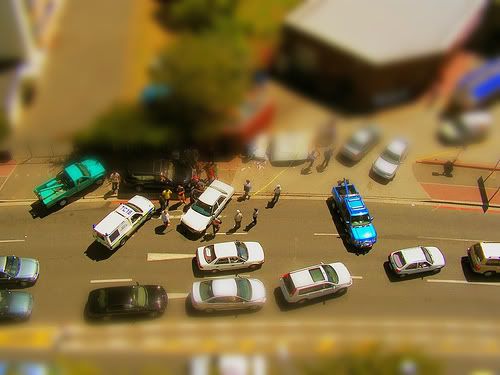 street photograph©victorgeere
street photograph©victorgeere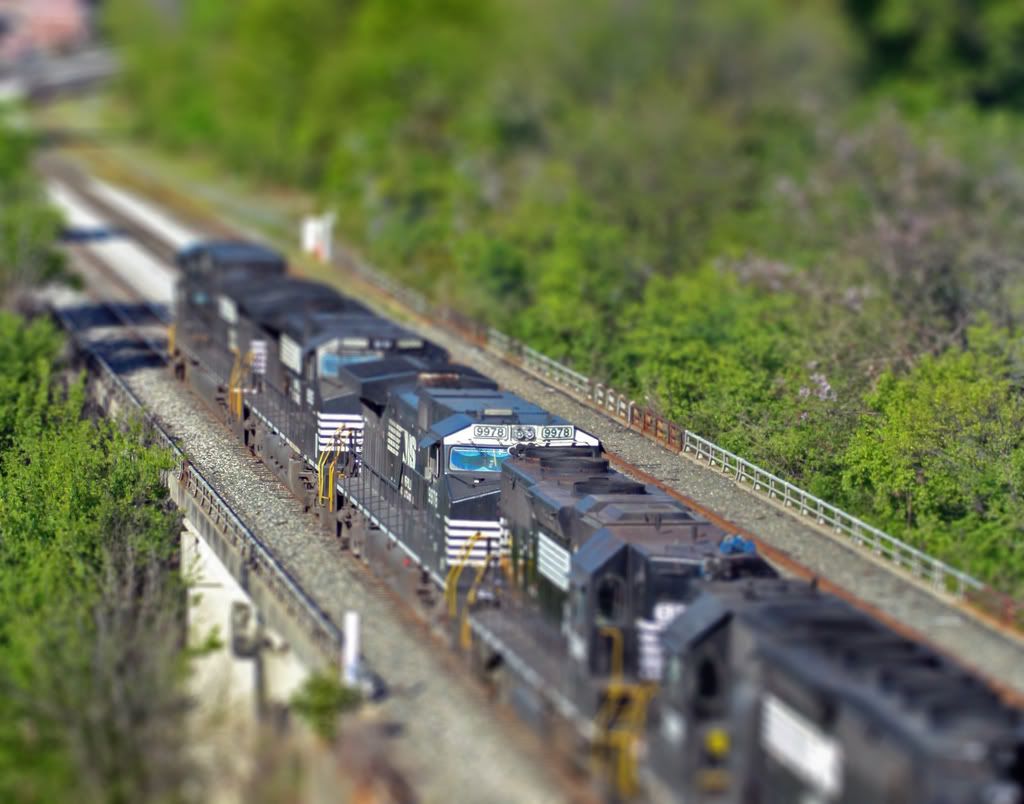 Train going over 6th Street in Uptown Charlotte, NC.
Train going over 6th Street in Uptown Charlotte, NC.More info On Tilt-shift photography
Professor James Duane’s Famous 5th Amendment Lecture.
Professor James Duane’s Lecture.
Vintage Russian Posters

Russian vintage advertising posters.
